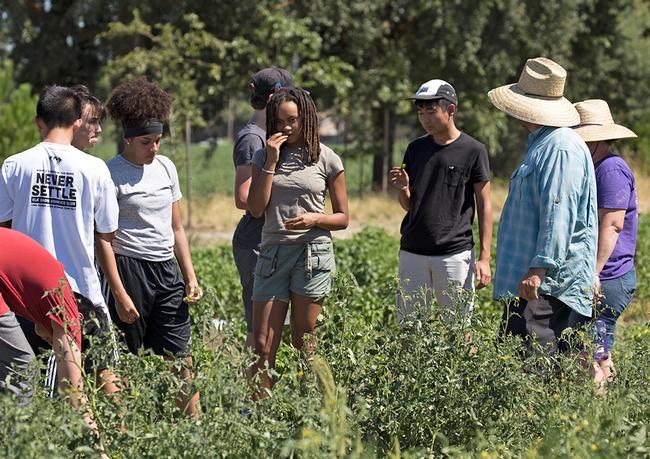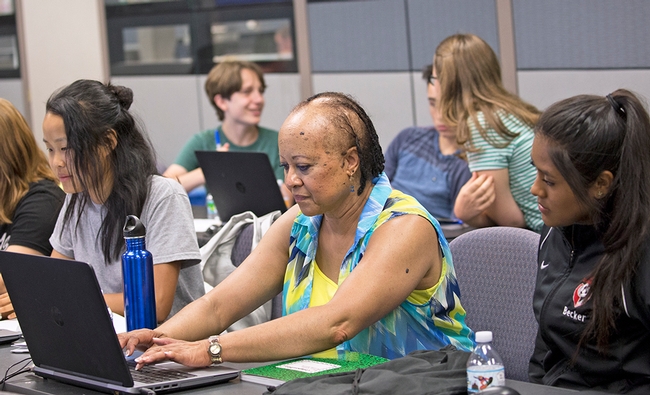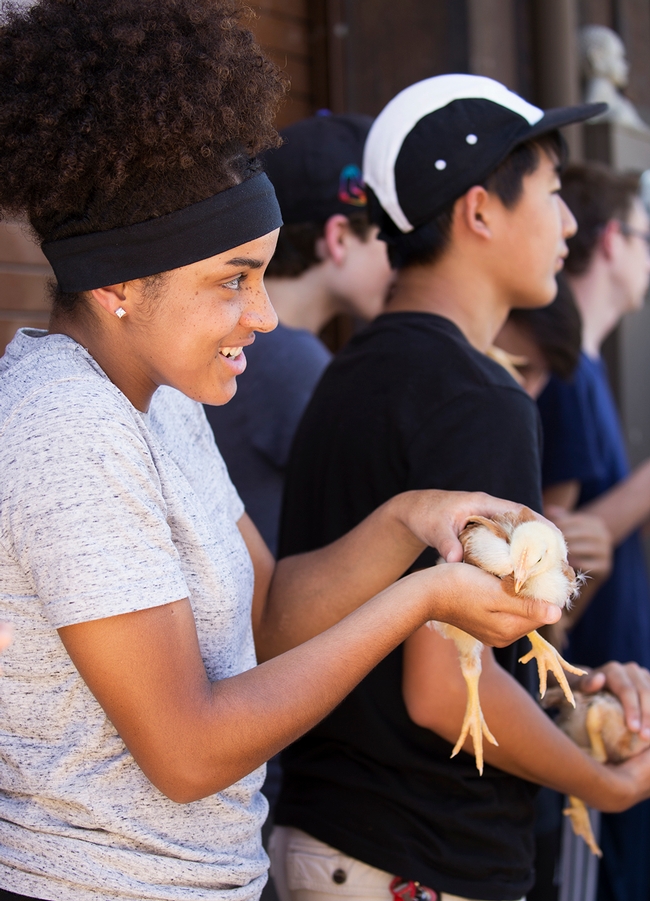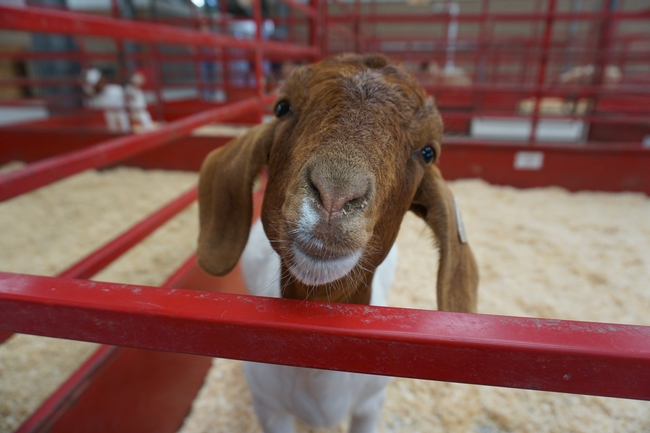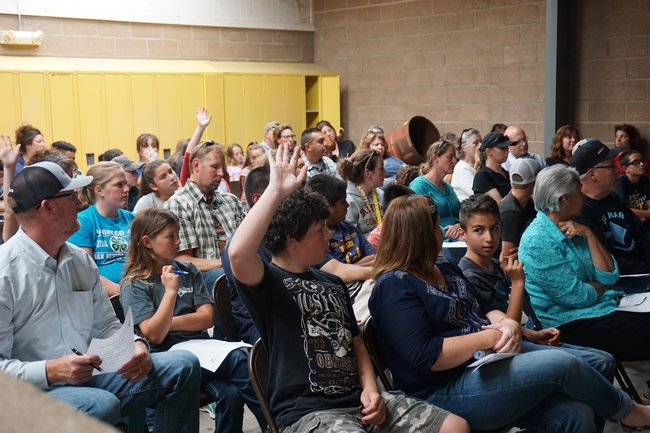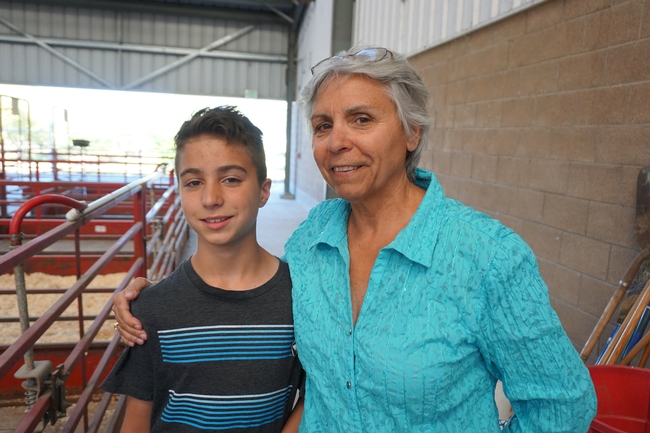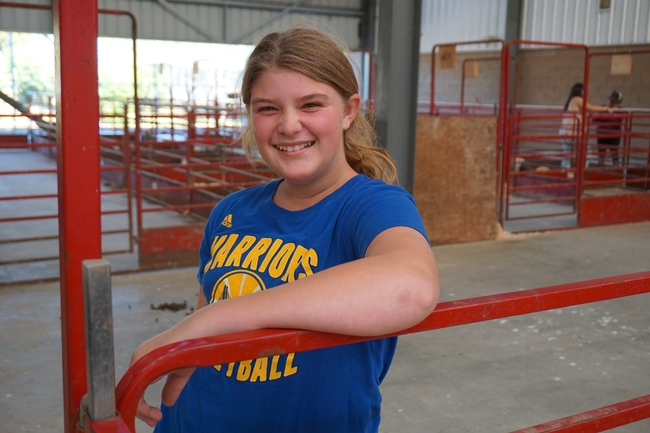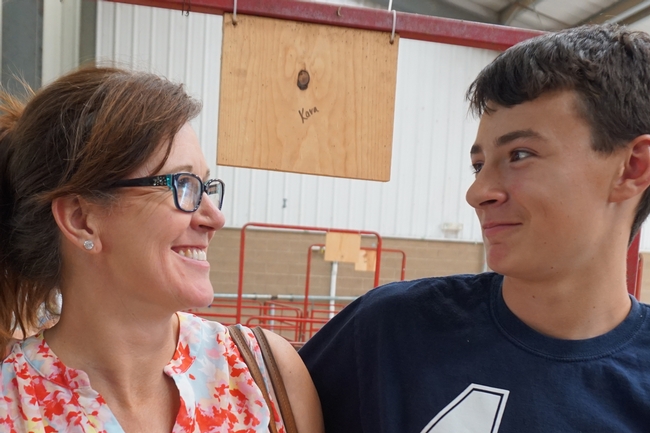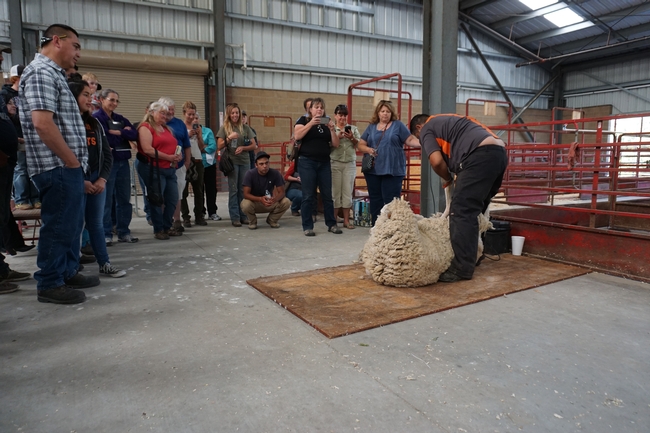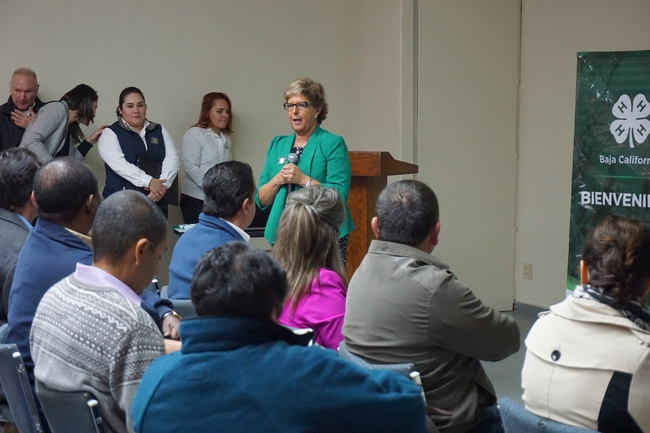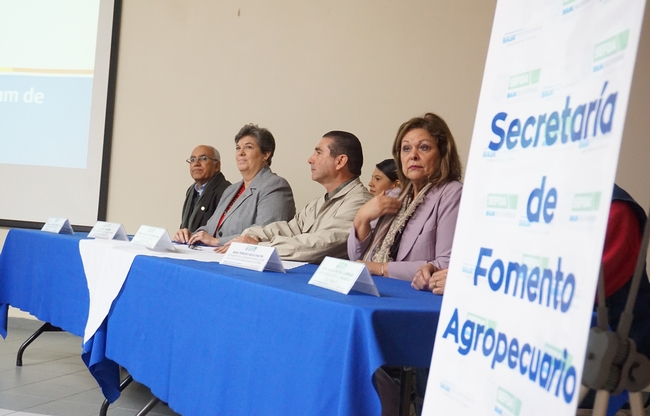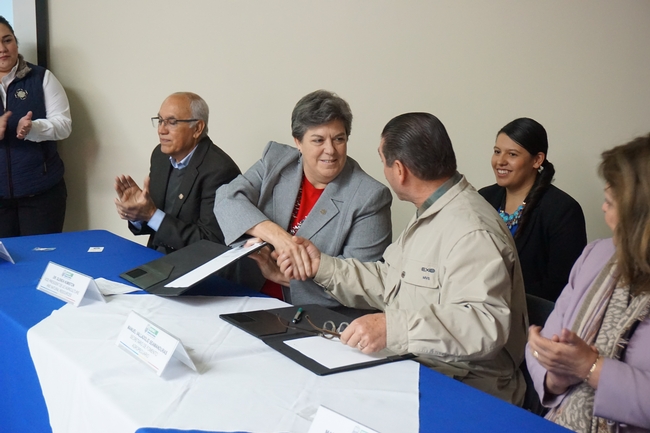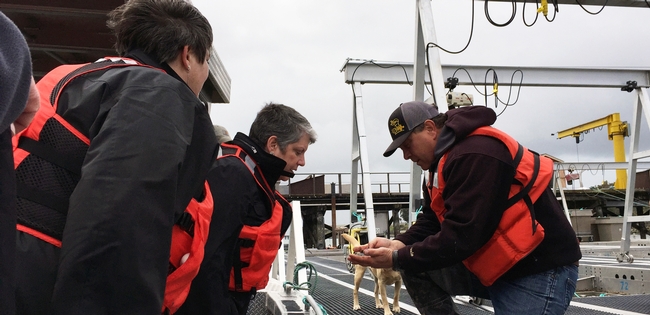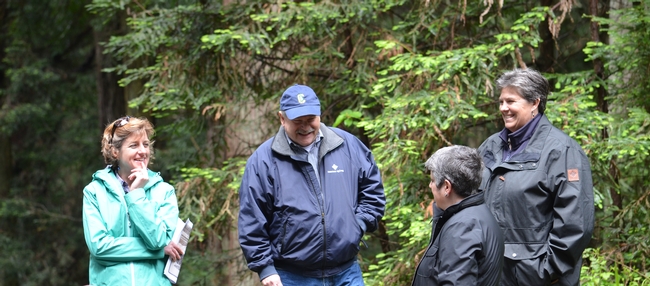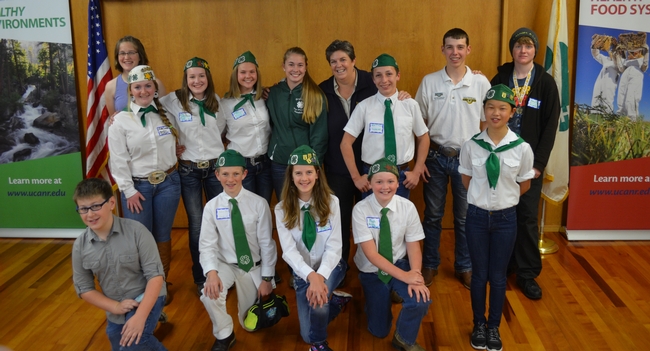- Author: Pamela Kan-Rice
As part of her job with the USDA, Joyce Hunter often attended meetings focused on using open data from the government to solve problems related to food and agriculture. But she noticed a distinct lack of women and young people at those open data meetings. Hunter was told there just weren't many who were interested.
“I thought to myself, well, they aren't looking in the right places,” said Hunter, an African American woman and former chief information officer at USDA. “Maybe we ought to encourage youth of different cultures and colors in order to ensure the pipeline is filled for the future. So I went to my CIO and asked her if it would be okay to set up an open data camp for youth, particularly underserved youth.”
By partnering with The Governance Lab at New York University and other agencies, Hunter organized summer camps for youth to experience science, technology, engineering, agriculture and math, or STEAM. This summer, she brought the STEAM camp concept to Sacramento. For two weeks in July, about two dozen high-school students went on field trips and engaged in STEAM-based activities as part of the California Open Data STEAM Summer Camp.
“One of the things I love about it is the kids are so curious and they're coming up with their own research questions, with their own challenges,” said Melanie Weir, a STEAM camp instructor. “They're asking questions about why agriculture is important to them. Why food is important to them.”
Adam Low, a sophomore at Franklin High School in Elk Grove, was one of the camp participants.
“I chose the water and drought group because as a Californian, we know California was most recently in a drought. And I wanted to see what this data camp could teach me about water and how it affects agriculture and other topics,” said Low.
“They're traveling all over,” Weir said. “They went to different places. They went to Russell Ranch, they saw the drones, they're really excited about it. They saw the UC Davis laboratory and the UC ANR researchers. They saw helicopters. They saw these big machines that have 35 cameras that do 3-D dimensional pictures of crops and what's out there. They also went to the Cannery and they loved hugging the chickens. They thought it was the greatest thing in the world.”
The California Open Data STEAM Summer Camp was made possible through a partnership between USDA, The Governance Lab and UC Agriculture and Natural Resources.
- Author: Jeannette E. Warnert
A 4-H sheep or goat project has something in common with ranchers raising animals for a living. In both cases, one objective is profit.
“Profit is not a dirty word,” said Dan Macon, UC Cooperative Extension assistant specialist in the UC Davis Department of Plant Sciences. “How many of you are using fair animals to save for college or buy a car? You're in business.”
Macon spoke at a Sheep and Goat Workshop June 13 for 4-H members, FFA students and local sheep and goat producers, organized by UC Cooperative Extension livestock and natural resources advisor Devii Rao. About 30 of the workshop participants represented the industry, 70 were young producers and family.
Macon discussed the direct and indirect costs of rearing animals, the optimal timing for breeding so lambs and kids will be weaned when grass is naturally abundant, and tactics for protecting sheep from predators.
“I call this, ‘Big dogs, hot fences and fast sheep,'” Macon said. “Someday I'm going to write a country song with that title.”
The big dogs are guardian animals that are not socialized to humans, but rather kept with sheep from the time they are tiny puppies. Donkeys and llamas can be effective guardians if the predators are coyotes and dogs.
UCCE advisor Roger Ingram covered the opportunity to manage rangeland with a flock of sheep or herd of goats. The concept is “targeted grazing.”
“Think of yourselves as grass and brush farmers with four-legged combines to harvest,” Ingram said.
He advised animal caregivers to learn to identify plants, as some are good for the animals, and some are not. For example, poison hemlock and milk weed are problem plants for certain animals.
Ten-year-old 4-H member Cody Watson attended the workshop with his grandmother Susan Gardner.
“Raising animals teaches responsibility and accountability,” Gardner said. “The kids learn where food comes from.”
Gardner was a 4-H member as a child, but when her children were growing up, she didn't have the income for property to house animals.
“It's fun,” Tobia said. “I'm there with all my friends.”
- Author: Jeannette E. Warnert
On Jan. 20, Mexican children dipped their hands into pails of soil to check the moisture level. They tapped the soil into seed trays and then pressed in the seeds of their choice – cabbage, peppers or flowers. Over the next few weeks, the children will gather in a greenhouse next to their Mexicali neighborhood to witness the miracle of germination.
The children also witnessed the building of a new bridge between California and Baja California that will give Mexican youth access to proven, hands-on educational experiences from the University of California Division of Agriculture and Natural Resources (UC ANR).
“The need for education doesn't stop at the border,” said Lupita Fábregas, UC Cooperative Extension 4-H Youth Development advisor and assistant director for 4-H diversity and expansion. “The wonderful educational opportunities available to California youth are now being offered to a group of children in Mexicali. And that program will be a model for the rest of Baja California and Mexico.”
Over the last 100 years, the UC ANR 4-H program has taught legions of California children about food, agriculture, leadership and community service using learn-by-doing practices. In January, UC ANR vice president Glenda Humiston traveled to Mexicali to sign a memorandum of understanding with the Baja California Secretary of Agriculture, Manuel Vallodolid Seamanduras, to offer that expertise to youth south of the border.
Seamanduras leads SEFOA in Baja, Mexico, an organization like California's Department of Food and Agriculture with facilities in Ejido Sinaloa, a small, humble neighborhood in Mexicali. At the ceremony marking the signing of an agreement between UC ANR 4-H and SEFOA, Seamanduras likened the pact to a marriage.
“This is a perfect marriage,” Seamanduras said. “This has produced 30 fruits that are not yet mature. But this fruit is going to feed your community.” The fruit Seamanduras referred to were the children in 4-H.
Seamanduras told the youth and families that the new club in Mexico is not a project of his office. “It is your club,” he said. “Give me your word that you will make this a successful program.”
José Enrique Partida Lizarraga is one of the people ready to take up the reins. His grandson was among the thirty 8- and 9-year-old founding members of the 4-H Baja California club.
“4-H will help the children become better citizens and this drew my attention because I have always felt that Mexico lacks good citizens working to better our country,” he said. “It is an honor for me to participate.”
Humiston, who credits 4-H with enabling her to be the first in her family to attend college, also spoke to the children gathered at a signing ceremony.
“We're excited to share the 4-H experience with you,” she said.
Today, projects in new technologies – like drones and rocketry – join more traditional projects – like cooking, sewing, animal husbandry and farming – to give youth channels to explore a wide variety of options and interests.
“We are looking into expanding to community colleges and offering education for future entrepreneurs or youth interested in skilled trades,” Humiston said.
Before stepping off the stage, Humiston lead the children in reciting the 4-H Pledge.
“I'm looking forward to coming down here and seeing 300 or even 400 4-H members next year,” Humiston said.
The establishment of a club like 4-H in Mexico is the fulfillment of a life's dream for Claudia Diaz Carrasco, 4-H Youth Development advisor for UC Cooperative Extension in Riverside and San Bernardino counties.
A native of Mexico City, Diaz Carrasco came to the U.S. to complete a master's degree in international agriculture. She saw kids in green shirts at a state 4-H Round Up that were learning about food security.
“I found my passion,” Diaz Carrasco said. “To solve world hunger, we need to find solutions one community at a time. 4-H does that.”
She intended to return to Mexico to share her new passion with her native community, but got a job with the University of California, where she is serving communities in Southern California that are nearly half Latino, many of Mexican descent.
Helping launch 4-H in Mexico, she said, felt like her own personal mission accomplished.
Although UC's northernmost campus is UC Davis, the region is served by UC Cooperative Extension. The university opened its first Cooperative Extension office in Eureka in 1913, but April 27 marked the first official visit to Humboldt County by a UC president.
“I hope to show the president how local residents benefit from UC Cooperative Extension and to give President Napolitano and Vice President Humiston ideas on how the university may get more involved in solving local challenges,” said Yana Valachovic, UC Cooperative Extension director and forest advisor for Humboldt and Del Norte counties, who organized the tour.

Accompanied by Glenda Humiston, UC vice president for Agriculture and Natural Resources, Napolitano's day began at the Potawot Health Village in Arcata, where United Indian Health Services (UIHS) has a clinic and gardens of more than 35 varieties of fruits, vegetables, and medicinal plants that serve 15,000 people in Del Norte and Humboldt counties.
Because the rate of diabetes among Native Americans is twice that of non-Hispanic whites, UIHS provides an integrated nutrition education program. The work of UC Cooperative Extension advisors Deborah Giraud and Dorina Espinoza and Jessica Conde Rebholtz, nutrition educator for the Expanded Food and Nutrition Education Program (EFNEP), complements UIHS's efforts for low-income community members.
“In EFNEP, we measure behavior changes over an eight-week program and we have seen positive changes in how people manage their resources. So, we can promote healthy eating within a budget,” said Espinoza. “But unless we have an environment that supports the very changes we're promoting, the habits are difficult to sustain.”
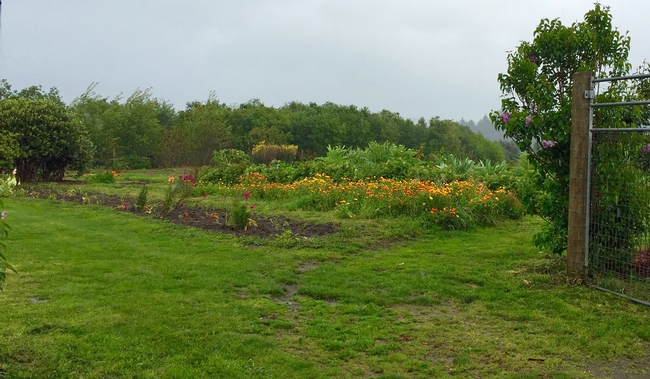
Rebholtz observed that collaborating agencies offer healthier options for their EFNEP clients and have begun replacing sugary drinks and goldfish crackers with water, fruit and vegetables as children's snacks.
“UC's statewide Nutrition Policy Institute works closely with our county-based Cooperative Extension teams and is doing the research on the effectiveness of these activities so we get this feedback loop that improves the programs,” Humiston noted.
Ensuring food security, health and sustainability are among the goals of UC's Global Food Initiative.

On the boat, Coast Seafoods Company manager Greg Dale shucked an oyster fresh from the bay. The former Arizona governor ate the oyster on the half shell.
“It doesn't get any fresher than this,” Dale said.
Dale explained how his company works with UC Cooperative Extension, UC Sea Grant and other businesses and organizations to maintain the water quality in the bay. “We all need excellent water quality for economic activity,” he said.
Dina Moore, who is married to a sixth-generation rancher in Kneeland and serves on the UC President's Advisory Commission for agriculture, told Napolitano she appreciates the expertise that Cooperative Extension brings from campus as much as the research the advisors provide locally to manage natural resources. “I think the university helps us embrace the reality of being environmentally forward-thinking,” Moore said.
Climate change is one of the challenges that UC is helping Humboldt County businesses address.
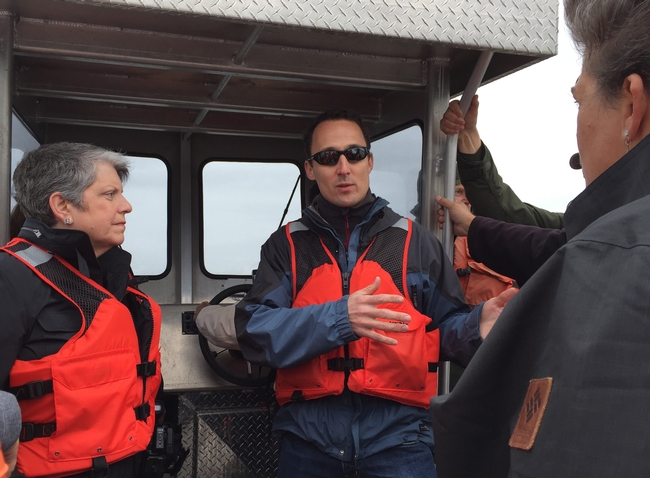
“Lower pH and carbonate saturation makes it more difficult for shellfish to acquire and assimilate carbonate from seawater to make their shells. Larval shellfish are especially vulnerable because of their small size and the fact that their shells are composed of aragonite, a more sensitive form of calcium carbonate,” Dale said. “It can affect their energy budget and survival.”
With the support of university researchers, hatcheries are monitoring the chemistry of seawater with an instrument called a Burkolator. “When the pH, and more importantly carbonate saturation, of seawater decrease to the point that it is harmful to larvae – which can occur during upwelling – hatchery managers can shut off intake pumps or add chemicals to buffer the water,” Tyburczy explained.
“We need someone like Joe to analyze the data and tell us what it means,” said Dale.
Forests provide economic and ecological benefits
After the boat ride, Napolitano and Humiston took a walk in the City of Arcata Community Forest, the largest community-owned forest in California. Mark Andre, City of Arcata environmental services director, described how the city works with UC to manage the 2,300 acres of redwoods for timber, wildlife, water quality and to sequester carbon for future generations, while simultaneously providing high-quality recreational opportunities for city residents.
“UC Cooperative Extension is important to us,” Andre said. “Community-based forestry integrates ecological, social and economic strategies. To honor the ecological emphasis we need science to inform our management decisions.

“This year we were able to coordinate several partners and bring $2.6 million dollars in conservation funding to help landowners restore their oak woodlands,” Valachovic said. “We provide a science, policy, research and educational hub for the region.”
When asked what she found most interesting about the bay and forest visits, Napolitano replied, “There's a relationship from the water to the land to the mountain and forest and there's a lot of science and biology that links those things in terms of how we think about them.”
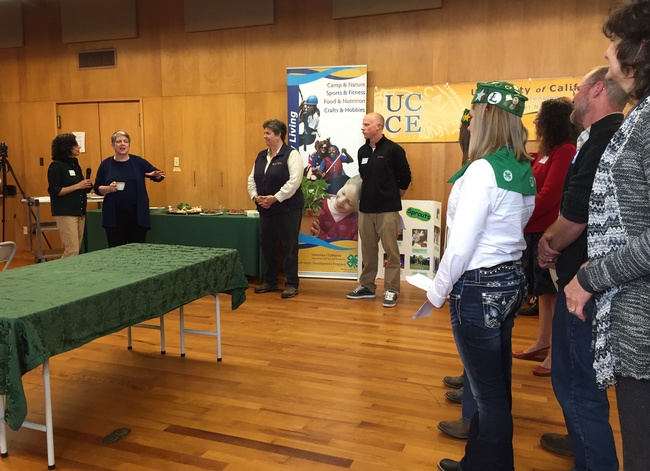
In the afternoon, UC 4-H Youth Development Program members and volunteers described for Napolitano and Humiston their projects, which ranged from raising calves to teaching safety in shooting sports to quickly solving a Rubik's cube to making videos and organizing a fashion week.
“4-H helps us build life skills,” said Molly Crandall, president of Arcata Bottom, California's oldest 4-H club, founded in 1913.
Napolitano lauded the 4-H members and volunteers for their accomplishments, and told them, “Know that through UC, and UC Extension and our Ag and Natural Resources Division, we intend to not only continue supporting 4-H, but doing evermore with 4-H because I think it's a great, great organization.”
At the end of the day, the president thanked all of the tour participants for enlightening her on what UC is doing in Humboldt County. “What I've been listening for today, and looking forward to hearing more about, is what more canthe university do,” Napolitano said. “I truly believe this is a great area of the state of California.”
Napolitano and Humiston joined in the 4-H pledge
Related links:
A UC president to visit Humboldt County for first time ever by Marc Vartabedian, the Eureka Times-Standard
Garden Tours with Homeland Security by Grant Scott-Goforth, North Coast Journal
University of California president visits Humboldt County by Taylor Torregano, KAEF-TV
UC Cooperative Extension in Humboldt County
- Author: Kathy Keatley Garvey

It's a soft, flannel blanket or cover-up that provides privacy to breast-feeding mothers and their newborns, but it's much more than that.
It's a 4-H project launched in 2013 by longtime Dixon 4-H leader Audrey Ritchey, an x-ray technician at the North Bay Medical Center, Fairfield. It helps promote breast-feeding and its many health and bonding benefits.
To date, Solano County 4-H'ers, under Ritchey's direction, have sewn 1,000 one-yard blankets for the new moms at North Bay.
“I was told that one mom started to cry when she got the cover-up,” Ritchey said. “She stated that it was the only thing she had for her baby.”
Ritchey, a co-community leader of the Tremont 4-H Club, Dixon, and vice president of the Solano County 4-H Leaders' Council, recalled that “three years ago I thought that 4-H was missing an opportunity to share the 4-H program with new moms at North Bay.”
She contacted a director at North Bay and learned about “a baby friendly program that encourages new moms to breast feed and have skin-to-skin contact with their newborns.”
So, Ritchey, along with a group of 4-H youth and their parents, gave birth, so to speak, to the “Cuddle Me Close” cover-up project. It is her pattern and her sewing machines.
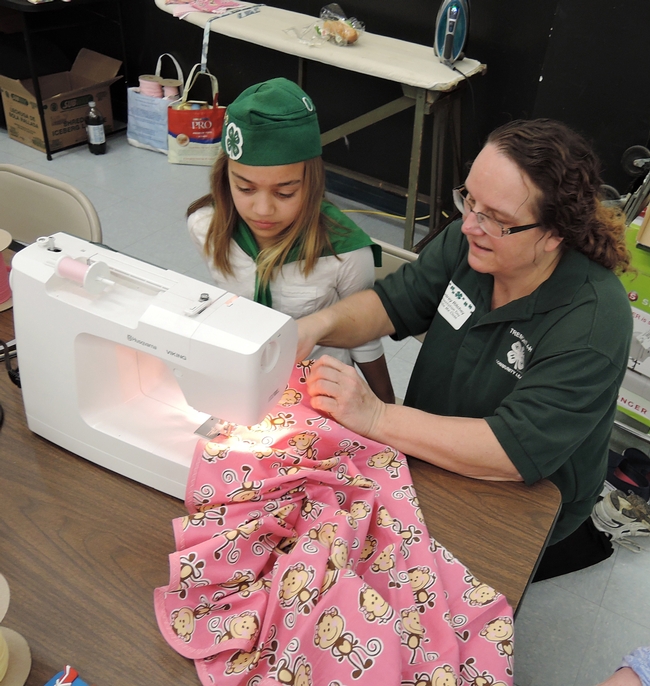
Ritchey applied for and received a 4-H Revolution of Responsibility grant. They've toured the North Bay Medical Center. They've given presentations at the hospital and at club and community events. Two years ago, a Girl Scout troop donated $250 from their cookie sales and many nurses have donated their Christmas gift cards to the project.
The project is closely linked to the 4-H Pledge:
“I pledge my head to clearer thinking
My heart to greater loyalty
My hands to larger service, and
My health to better living
For my club, my community, my country and my world.”
Ritchey says the youngsters in her project not only learn how to sew, but learn to connect with one another, learn to budget, and fulfill a public service need. Studies show that breast milk contains antibodies that help babies fight off viruses and bacteria and lowers the risk of allergies, ear infections, respiratory illnesses and bouts of diarrhea. Breastfed babies have a lower risk of childhood obesity.
Ritchey said the project “promotes mother-baby bonding through skin-to-skin contact, supports positive and physical and mental development, is healthier for mother and child and is inexpensive in comparison to formula."
“As long as I have youth that want to do this I will keep making them,” Ritchey vows.
In addition to the sewing project, Ritchey teaches a number of countywide 4-H projects, including poultry, rabbits and cavies (guinea pigs).
The 4-H Youth Development Program is a non-profit youth educational program administered through the UC Agriculture and Natural Resources Cooperative Extension. In 4-H, youths from ages 5 to 19 learn skills through hands-on learning and have fun doing it, said Valerie Williams, Solano County 4-H program representative. The international organization draws youth from all ethnic, racial, and socio-economic backgrounds who live in rural, suburban, and urban communities. The four H's in 4-H stand for head, heart, hands, and health. Its motto is “To make the best better.”
The heart of 4-H's hands-on learning are age-appropriate projects within each club. 4-H is more than “cows and chickens.” Each project focuses on a topic, anything from A (art) to Z (zoology). Among the many projects: animal sciences, bicycling, camping, computers, drama, entomology, leadership, music, photography, quilting, rocketry, textile arts, and woodworking.
For information on the Solano County 4-H Program, access http://cesolano.ucanr.edu or contact Valerie Williams at vawilliams@ucanr.edu or (707) 784-1319. For donations of fabric or funds to the “Cuddle Me Close” 4-H project, contact Audrey Ritchey at ritcheysribbits@gmail.com.

